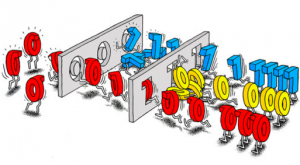
This is the first in series of practice tests / interview questions and answers in relation to Quantum computing. It touches upon the basic concepts in relation to some of the following:
- Qubit
- Difference between a bit and Qubit
- Superposition of Qubit states
- Quantum entanglement
This practice test will prove to be useful for Quantum Computing beginners / interns / freshers.
Revision Notes – Quantum Computing Fundamentals
- Quantum computing is different than classical computing. Problems which are suited for quantum computing should be considered for Quantum computing.
- A Qubit is a two-state quantum mechanical system;
- A Qubit can be in superposition of both the states at the same time.
- A Qubit is similar to bit in the way that the measurement of Qubit has two possible outcomes, usually 0 and 1
- A Qubit is different than bit in the way that a Qubit can be in a state which is a superposition of both 0 and 1
- The two states in which a qubit may be measured are known as basis states (basis vectors)
- In quantum mechanics, the Bloch sphere is a geometrical representation of the pure state space of a 2-level quantum system. The Bloch sphere is actually, geometrically, spherical in shape.
- A Quantum logic gate can operate on a Qubit.
- 8 Qubits = 1 Qubyte (Quantum Byte)
- A Qubit can be measured with quantum register
- A Qubit is different than bit due to following reasons:
- It can have superposition of states, e.g., can be in both states (usually 0 and 1) at the same time.
- Can be entangled with other Qubit
- In case of 2-qubit system, it is not possible to determine state of individual qubit in the system as the states of the two qubits are entangled
Practice Test – Quantum Computing Fundamentals
[wp_quiz id=”6106″]
References
Latest posts by Ajitesh Kumar (see all)
- Mathematics Topics for Machine Learning Beginners - July 6, 2025
- Questions to Ask When Thinking Like a Product Leader - July 3, 2025
- Three Approaches to Creating AI Agents: Code Examples - June 27, 2025
I found it very helpful. However the differences are not too understandable for me